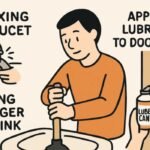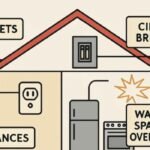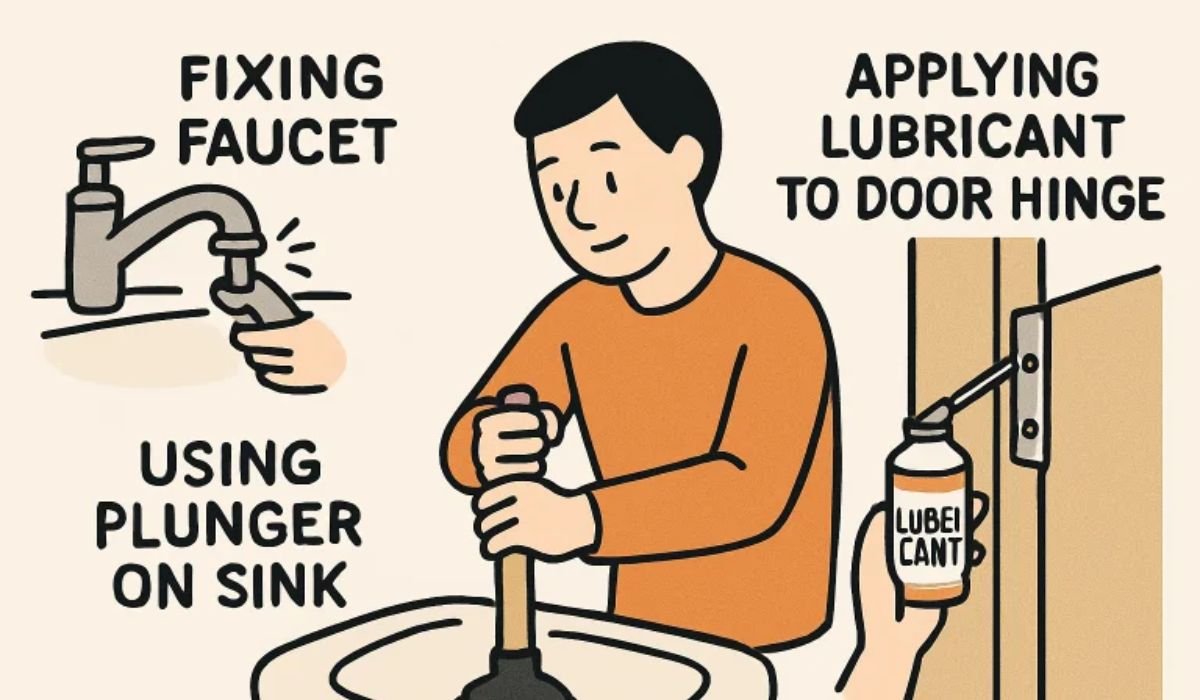Key Takeaways
- Ongoing maintenance is crucial for preventing common home repair problems.
- Many repairs, such as unclogging drains or silencing squeaky doors, can be handled without professional help.
- Recognizing when it’s time to call a professional is critical for more complex or serious issues.
Table of Contents
- Introduction
- Leaky Faucets
- Clogged Drains
- Squeaky Doors
- Running Toilets
- Drafty Windows
- Peeling Paint
- Roof Leaks
- Foundation Cracks
Maintaining your home can feel overwhelming, but many everyday repair issues can be resolved quickly with a bit of know-how. By addressing common problems early, you can maintain your property’s value, keep your living environment safe, and avoid expensive repairs down the line. Many repairs are simple enough for most homeowners, though knowing when to hire a general contractor near me is also essential. Understanding what you can fix yourself—and when to call a pro—can save you both time and money. Proactive maintenance prevents minor annoyances from turning into major headaches. With a handful of basic tools and some DIY confidence, you can tackle many issues that would otherwise cause unnecessary stress. From leaky faucets to drafty windows, learning the basics of home repair equips you to confidently care for your home while enjoying the satisfaction that comes with a job well done.
Leaky Faucets
Even a slow-dripping faucet can significantly increase your water bill and waste gallons over time. Worn-out washers or O-rings are often the cause, and replacing them is a straightforward DIY task. Shut off the water supply, unscrew the faucet handle, and swap out the faulty washer or O-ring—these simple parts are inexpensive and widely available. This repair is also a good starting point to learn basic plumbing skills.
Clogged Drains
Slow or backed-up drains are some of the most common household issues. To quickly clear minor clogs, pour a cup of baking soda followed by a cup of vinegar down the drain, then flush with boiling water after ten minutes. For more challenging clogs, a plunger or a drain snake will typically do the trick. Avoid using harsh chemical drain cleaners, as these can harm your plumbing over time. Prevent future clogs by regularly cleaning drain covers and being mindful of what goes down the sink or shower drain. If the clog persists despite your efforts, it may be time to seek professional help to prevent damage to your pipes.
Squeaky Doors
Squeaky doors are more than just an annoyance—they’re a sign the hinges may need attention. Apply a few drops of lubricant, such as WD-40, to each hinge and move the door back and forth to distribute it evenly. If squeaking remains, check for loose screws and tighten them; if the holes have become stripped, try using slightly longer screws for a more secure fit. Regular maintenance on hinges and hardware prevents future squeaks and extends their lifespan.
READ ALSO: Essential Home Electrical Safety Tips Every Homeowner Should Know
Running Toilets
A constantly running toilet can waste hundreds of gallons of water per week. A worn-out or misaligned flapper in the toilet tank is a common cause of this issue. Replacing the flapper typically takes just a few minutes, and no tools are required. To determine if a faulty fill valve is the issue, listen for ongoing water flow after flushing or look for water trickling into the bowl. Then, replace the faulty components as needed. Regular inspection and prompt replacement of worn parts can keep your toilet running efficiently.
Drafty Windows
Drafty windows can significantly increase your heating and cooling bills, as conditioned air escapes and outside air comes in. Applying weatherstripping to window sashes and using caulk to seal gaps and cracks around frames can dramatically improve your home’s energy efficiency. Foam-sealant products are also helpful for larger gaps. Consider using window film kits during the colder months to add an extra layer of insulation. Maintaining seals on doors and windows helps your HVAC system run more efficiently and keeps your home comfortable throughout the year.
Peeling Paint
Peeling or chipped paint can make your home look neglected and reduce curb appeal. To repair, first scrape off any loose or flaking paint, then sand the area to a smooth finish. Make sure the surface is both clean and dry before applying primer and a fresh topcoat of paint. High-moisture areas, such as bathrooms, may need special mold-resistant or mildew-resistant paints. Addressing moisture issues—like leaks or inadequate ventilation—can prevent paint from peeling in the future.
Roof Leaks
Roof leaks can cause extensive water damage and should be addressed as soon as they’re noticed. Look for missing, cracked, or curled shingles and replace them as necessary. Sealing minor holes or loose flashing with roofing cement is a temporary and effective solution. However, if you notice widespread issues, structural sagging, or significant water stains inside your home, it’s best to bring in a professional roofer for a comprehensive inspection and repair. Proper seasonal roof maintenance helps prevent leaks and extends the lifespan of your roof.
Foundation Cracks
Small cracks in your foundation are common as homes settle, but it’s essential to monitor their size and direction. Hairline cracks that remain stable can usually be filled with an epoxy or polyurethane foam. For larger cracks—especially those that appear suddenly, expand quickly, or are accompanied by sticking windows and doors—consult a structural engineer or experienced contractor. Large or shifting cracks can indicate severe foundation problems. Regularly inspecting your foundation and addressing concerns early can help preserve your home’s structural integrity.
By handling these typical home repair problems quickly and effectively, you’ll not only enhance your home’s comfort and appearance but also avoid far more costly repairs in the future. Regular upkeep and timely intervention can make a world of difference in homeownership, keeping your living space safe, functional, and inviting.
YOU MAY ALSO LIKE: Smart Solutions for Safe and Efficient Homes: Modern Electrical Upgrades Everyone Should Consider










